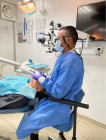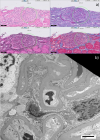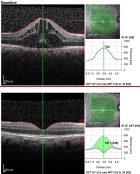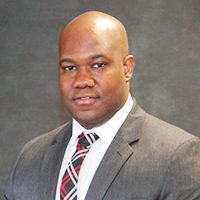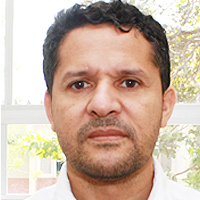Abstract
Research Article
Success Rate and Complications of Endoscopic Deacryocystorhinostomy without Stenting: A Retrospective Study
Tulachan B* and Acharya R
Published: 16 April, 2025 | Volume 9 - Issue 1 | Pages: 001-004
Endoscopic dacryocystorhinostomy (EDCR) is a well accepted surgical treatment for patients with nasolacrimal duct obstruction (NLDO). Previously, external dacryocystorhino-stomy was considered as the gold standard treatment for NLDO, however, EDCR has gained momentum due to its several advantages. The EDCR has been sounding more aesthetic and as functional compared to the traditional external dacryocystorhinostomy in the surgical treatment of nasolacrimal duct obstruction with comparable outcomes.
Purpose: to determine the success rate and complications of endoscopic dacryocystorhinostomy without stenting.
Materials and methods: it was a retrospective study performed in the department of Otorhinolaryngology and Head and Neck Surgery (ORL-HNS), Universal College of Medical Sciences-Teaching Hospital (UCMS-TH) from June 2019 to September 2024. A total of 19 patients charts were reviewed. All the cases were performed under general anesthesia. All the cases had undergone without silicon stenting and were regularly followed up for a period of 3 months. Post operative stomal patency and complications were noted based on subjective and endoscopic evaluation.
Results: Out of 19 patients, 12 were female and 7 were male with the age range of 12 to 70 years. Transnasal synechiae was seen in 2 female and 1 male patients. Stomal patency was 100% with no recurrence of epiphora in 17 patients (89.4%) during 3 months of follow up. 2 female patients with released synechiae didn’t come for 3 months follow up.
Conclusion: It is a safe and minimally invasive procedure and has a comparable success rate to external DCR with an additional advantage of more aesthetic value.
Read Full Article HTML DOI: 10.29328/journal.hor.1001030 Cite this Article Read Full Article PDF
Keywords:
Endoscopic; Dacryocystorhinostomy; Aesthetic
References
- Sung JY, Lee YH, Kim KN, Kang TS, Lee SB. Surgical outcomes of endoscopic dacryocystorhinostomy: analysis of age effect. Sci Rep. 2019;9:19861. Available from: https://doi.org/10.1038/s41598-019-56491-y
- Neil F, Jones NS. Dacryocystorhinostomy. In: Gleeson M, editor. Scott-Brown’s Otorhinolaryngology, Head and Neck Surgery. London: Edward Arnold Ltd; 2008;1689–98.
- Mak ST, Io IY, Wong AC. Prognostic factors for outcome of endoscopic dacryocystorhinostomy in patients with primary acquired nasolacrimal duct obstruction. Graefes Arch Clin Exp Ophthalmol. 2013 May;251(5):1361–7. Available from: https://doi.org/10.1007/s00417-012-2228-9
- Leong SC, Macewen CJ, White PS. A systematic review of outcomes after dacryocystorhinostomy in adults. Am J Rhinol Allergy. 2010 Jan-Feb;24(1):81–90. Available from: https://doi.org/10.2500/ajra.2010.24.3393
- Coumou AD, Genders SW, Smid TM, Saeed P. Endoscopic dacryocystorhinostomy: long-term experience and outcomes. Acta Ophthalmol. 2017 Feb;95(1):74–8. Available from: https://doi.org/10.1111/aos.13217
- Ali MJ, Psaltis AJ, Bassiouni A, Wormald PJ. Long-term outcomes in primary powered endoscopic dacryocystorhinostomy. Br J Ophthalmol. 2014 Dec;98(12):1678–80. Available from: https://doi.org/10.1136/bjophthalmol-2014-305510
- Yung MW, Hardman-Lea S. Analysis of the results of surgical endoscopic dacryocystorhinostomy: effect of the level of obstruction. Br J Ophthalmol. 2002 Jul;86(7):792–4. Available from: https://doi.org/10.1136/bjo.86.7.792
- Ben Simon GJ, Joseph J, Lee S, Schwarcz RM, McCann JD, Goldberg RA. External versus endoscopic dacryocystorhinostomy for acquired nasolacrimal duct obstruction in a tertiary referral center. Ophthalmology. 2005 Aug;112(8):1463–8. Available from: https://doi.org/10.1016/j.ophtha.2005.03.015
- Karpishchenko SA, Vereshchagina OE, Baranskaya S, Karpov AA. Rhinological Aspects of Endonasal Endoscopic Dacryocystorhinostomy. Glob J Otolaryngol. 2018;14(4):1–4. Available from: http://dx.doi.org/10.19080/GJO.2018.14.555895
- Ayoob M, Mahida K, Qurat-ul-ain, Dawood Z. Outcome and complications of endoscopic dacryocystorhinostomy without stenting. Pak J Med Sci. 2013 Sep-Oct;29(5):1236–9. Available from: https://doi.org/10.12669/pjms.295.3393
- Pradhan B. Outcome of endoscopic DCR at TUTH. Nepal J ENT Head Neck Surg. 2011;2(1):20–1. Available from: https://doi.org/10.3126/njenthns.v2i1.6780
- Tan NC, Rajapaksa SP, Gaynor J, Nair SB. Mechanical endonasal dacryocystorhinostomy—a reproducible technique. Rhinology. 2009;47(3):310–5. Available from: https://doi.org/10.4193/Rhin08.150
- Mortimore S, Banhegyi GY, Lancaster JL, Karkanevatos A. Endoscopic dacryocystorhinostomy without silicone stenting. J R Coll Surg Edinb. 1999;44(6):371–3. Available from: https://pubmed.ncbi.nlm.nih.gov/10612959/
- Aslam S, Awan AH, Tayyab M. Endoscopic dacryocystorhinostomy: a Pakistani experience. Pak J Ophthalmol. 2010;26(1):2–6. Available from: https://pjo.org.pk/index.php/pjo/article/view/595
- Yuen KSC, Lam LYM, Tse MWY. Modified endoscopic dacryocystorhinostomy with posterior lacrimal flap for nasolacrimal duct obstruction. Hong Kong Med J. 2004;10(6):394–400. Available from: https://pubmed.ncbi.nlm.nih.gov/15591598/
- Kakar V, Chugh JP, Sachdeva S, Sharma N, Ramesh. Endoscopic dacryocystorhinostomy with and without silicone stent: a comparative study. Internet J Otorhinolaryngol. 2009;9(1).
- Shrestha S, Kafle PK, Pokhrel S, Maharjan M, Toran KC. Success rate of endoscopic dacryocystorhinostomy at KMC. Kathmandu Univ Med J. 2010;8(30):195–8. Available from: https://doi.org/10.3126/kumj.v8i2.3557
- Hamal D, Kafle PA, Lamichhane B, Anwar A, Singh SK. Endoscopic endonasal dacryocystorhinostomy under local anesthesia or assisted local anesthesia. Nepal J Ophthalmol. 2022;14(1):10–8. Available from: https://doi.org/10.3126/nepjoph.v14i1.21971
- Abdu L, Bawahab N, Mohammed Hussain RW, Qary H, Saeedi A, Alhibshi N. Prevalence and treatment outcome of nasolacrimal duct obstruction in Saudi children with Down syndrome. Cureus. 2020;12(1):e6672. Available from: https://doi.org/10.7759/cureus.6672
- Hehar SS, Jones NS, Sadiq A, Downes RN. Endoscopic holmium: YAG laser dacryocystorhinostomy is safe and effective as a day care procedure. J Laryngol Otol. 1997;111(11):1056–9. Available from: https://doi.org/10.1017/s0022215100139325
- Unlu HH, Toprak B, Aslan A, Guler C. Comparison of surgical outcomes in primary endoscopic dacryocystorhinostomy without silicone intubation. Ann Otol Rhinol Laryngol. 2002;111(8):704–9. Available from: https://doi.org/10.1177/000348940211100809
- Yang JW, Oh HN. Success rate and complications of endonasal dacryocystorhinostomy with unciformectomy. Graefes Arch Clin Exp Ophthalmol. 2012;250(10):1509–13. Available from: https://doi.org/10.1007/s00417-012-1992-x
Figures:
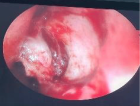
Figure 1

Figure 2
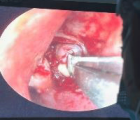
Figure 3

Figure 4
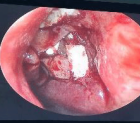
Figure 5
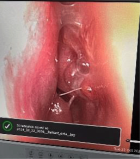
Figure 6
Similar Articles
-
Transcanal Endoscopic Excision of Glomus Tympanicum in can tho Ent Hospital: Three Cases ReportPham Xuan Huyen, Ho Le Hoai Nhan, Pham Thanh The, Chau Chieu Hoa*. Transcanal Endoscopic Excision of Glomus Tympanicum in can tho Ent Hospital: Three Cases Report. . 2023 doi: 10.29328/journal.hor.1001026; 7: 001-004
-
Success Rate and Complications of Endoscopic Deacryocystorhinostomy without Stenting: A Retrospective StudyTulachan B*,Acharya R. Success Rate and Complications of Endoscopic Deacryocystorhinostomy without Stenting: A Retrospective Study. . 2025 doi: 10.29328/journal.hor.1001030; 9: 001-004
Recently Viewed
-
Chronic endometritis in in vitro fertilization failure patientsAfaf T Elnashar*,Mohamed Sabry. Chronic endometritis in in vitro fertilization failure patients. Clin J Obstet Gynecol. 2020: doi: 10.29328/journal.cjog.1001073; 3: 175-181
-
Relation of Arachnophobia with ABO blood group systemMuhammad Imran Qadir,Sani E Zahra*. Relation of Arachnophobia with ABO blood group system. J Hematol Clin Res. 2019: doi: 10.29328/journal.jhcr.1001011; 3: 050-052
-
Preservation of Haemostasis with Anti-thrombotic Serotonin AntagonismMark IM Noble*,Angela J Drake-Holland. Preservation of Haemostasis with Anti-thrombotic Serotonin Antagonism. J Hematol Clin Res. 2017: doi: 10.29328/journal.jhcr.1001004; 1: 019-025
-
Neutrophil to Lymphocyte Ratio (NLR) in Peripheral Blood: A Novel and Simple Prognostic Predictor of Non-small Cell Lung Cancer (NSCLC)Xiaoli Zhang,Ziyuan Zou,Liyu Fan,Xinjie Xu,Yu Siyuan,Peng Luo*. Neutrophil to Lymphocyte Ratio (NLR) in Peripheral Blood: A Novel and Simple Prognostic Predictor of Non-small Cell Lung Cancer (NSCLC). J Hematol Clin Res. 2017: doi: 10.29328/journal.jhcr.1001002; 1: 011-013
-
Gilbert’s Syndrome Revealed by Hepatotoxicity of ImatinibImen Ben Amor*,Imen Frikha,Moez Medhaffer,Moez Elloumi. Gilbert’s Syndrome Revealed by Hepatotoxicity of Imatinib. Ann Clin Gastroenterol Hepatol. 2025: doi: 10.29328/journal.acgh.1001049; 9: 001-003
Most Viewed
-
Evaluation of Biostimulants Based on Recovered Protein Hydrolysates from Animal By-products as Plant Growth EnhancersH Pérez-Aguilar*, M Lacruz-Asaro, F Arán-Ais. Evaluation of Biostimulants Based on Recovered Protein Hydrolysates from Animal By-products as Plant Growth Enhancers. J Plant Sci Phytopathol. 2023 doi: 10.29328/journal.jpsp.1001104; 7: 042-047
-
Sinonasal Myxoma Extending into the Orbit in a 4-Year Old: A Case PresentationJulian A Purrinos*, Ramzi Younis. Sinonasal Myxoma Extending into the Orbit in a 4-Year Old: A Case Presentation. Arch Case Rep. 2024 doi: 10.29328/journal.acr.1001099; 8: 075-077
-
Feasibility study of magnetic sensing for detecting single-neuron action potentialsDenis Tonini,Kai Wu,Renata Saha,Jian-Ping Wang*. Feasibility study of magnetic sensing for detecting single-neuron action potentials. Ann Biomed Sci Eng. 2022 doi: 10.29328/journal.abse.1001018; 6: 019-029
-
Pediatric Dysgerminoma: Unveiling a Rare Ovarian TumorFaten Limaiem*, Khalil Saffar, Ahmed Halouani. Pediatric Dysgerminoma: Unveiling a Rare Ovarian Tumor. Arch Case Rep. 2024 doi: 10.29328/journal.acr.1001087; 8: 010-013
-
Physical activity can change the physiological and psychological circumstances during COVID-19 pandemic: A narrative reviewKhashayar Maroufi*. Physical activity can change the physiological and psychological circumstances during COVID-19 pandemic: A narrative review. J Sports Med Ther. 2021 doi: 10.29328/journal.jsmt.1001051; 6: 001-007

HSPI: We're glad you're here. Please click "create a new Query" if you are a new visitor to our website and need further information from us.
If you are already a member of our network and need to keep track of any developments regarding a question you have already submitted, click "take me to my Query."







